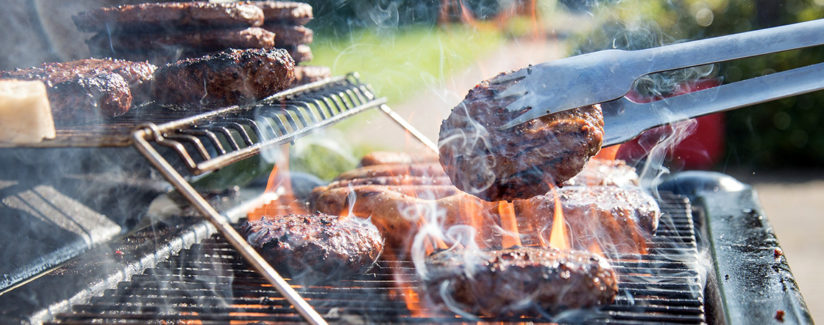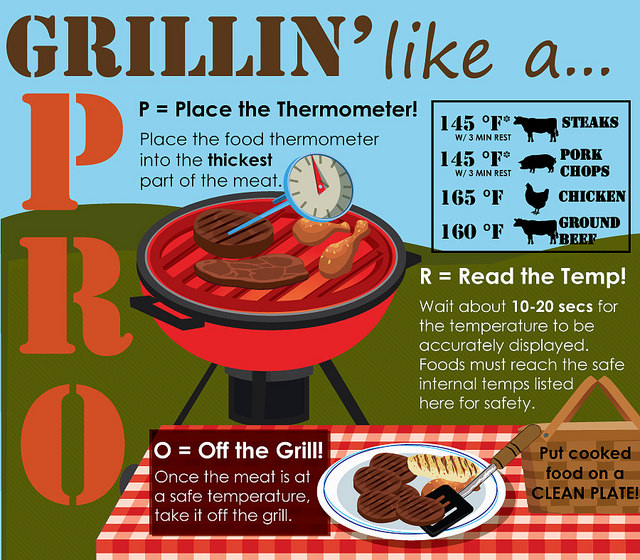
Nutrition Doesn’t Have to Go Up in Smoke
05/23/2018
On your mark, get set, start your grills! It’s officially the start of grilling season and we couldn’t be more excited here at Best Food Facts. We’ve talked about smoked meats before, but we wanted to look at the health aspects of grilling your foods, too. Grilling meats, fruits, vegetables and other foods has increased in popularity, and more people are using backyard grills to create their own delicious dishes. We caught up with Sarah Downs, MBA, RDN, to learn more about nutritional aspects of cooking outside.
What health aspects do people need to consider when preparing food with their smokers?
Downs: “Smoking can be a fantastic way to add flavor without all the calories, fat and sodium. However, it’s important to remember that things like marinades, rubs and sauces can all add a large number of calories, fat, sodium and even sugar. So, be sure to use them in moderation.
“Smoking doesn’t really impact the nutritional value of meats, but can be a great method for added flavor without the added fat.”
How does the method of food preparation affect the nutrition of foods?
Downs; “Heat can break down and destroy some vitamins in vegetables, especially vitamin C and B. However, heat can also make the carotenoids (a type of antioxidant found in things like carrots and tomatoes) easier for the body to absorb. This can also kill the bad bacteria in food that can make us sick.
“A rule of thumb to keep in mind while cooking fruits and vegetables is that more nutrients will be retained when cooking time, temperature and the amount of liquid are kept to a minimum.
For cooking meats, the methods that are the most nutritious are those that require minimal added fats. This includes grilling, broiling, baking, boiling and smoking, of course! It’s also important to choose lean cuts of meats, fish and plant-based proteins.”
So, we are all about throwing anything we can in our smokers and on the grill. What’s the healthiest thing for me to cook?
Downs: Stick with meats that are lean. Some examples of this include chicken breast, lean turkey and flank steaks. Other healthy options are fish, tofu and other plant-based protein sources.”
What about marinades or rubs? How can they affect the nutritional value of grilled meat and poultry?
Downs: “Store bought marinades and rubs can be high in sodium and calories, so it’s important to take a look at the nutrition facts label and use the appropriate serving size.
“Want a healthier option? Consider making your own! Start with olive oil and add your favorite herbs and spices. Don’t be afraid to experiment with other flavors like mustard, lemon juice, low-sodium soy sauce and vinegar. To help minimize the number of calories, brush the marinade on at the end of cooking instead of letting it soak ahead of time.”
Many other foods can be cooked over a fire such as vegetables like onions, sweet potatoes, peppers, corn, squash and tomatoes. Any tips on which vegetables provide nutritional advantages?
Downs: “As I mentioned, heat can break down and destroy some vitamins in vegetables, but it can also increase other nutrients. Vegetables that retain the best nutrient content when heated are those that have low water content like mushrooms, onions, asparagus and peppers.”
Fruits like peaches, apples, bananas and pineapples can be grilled and smoked, too! Does smoking fruits impact their nutritional value?
Downs: “It can. Like vegetables, use fruits with a low water content or wrap them in aluminum foil when smoking to keep all the nutrients (and flavors!) contained.”
Are you ready to take grilling into your own hands? The USDA has created a handy, and informative, way to remember safe temperatures to cook your meat to. If you’re looking for more information on the topic, we’ve covered that, too!
Originally published October 19, 2015.



























